With its popularity peak in the mid-19th century, American milk glass pieces are valuable collectibles nowadays. This glass got its appropriate name from the opaque ivory color it is famous for. Collectors enjoy various milk glass pieces available on the current market.
Many items of this delicate material, such as candlesticks, bowls, plates, cups, and vases, regularly appear on the antique market. Before buying some of them, let’s check the antique milk glass identification and price guide.
Table of Contents
Milk Glass History
The opaque glass vessel creation process dates back to ancient Egypt, 1500 BC. However, the contemporary milk glass notion refers to opaque ivory glass, popular in America and England from 1835 to the 1980s.
As you can see, milk glass was in production for almost 300 years before it became popular in the mid-19th century. In the earliest factories, workers inserted molten glass into an iron mold and arranged the molten glass in each corner with a piston.
The manufacturers added arsenic to the standard glass recipe to make milk glass, giving it a slightly grayish color. Later, feldspar, tin-oxide, and other additives were added instead of arsenic to achieve a more saturated ivory color.
A significant change occurred in 1820 when a machine for pressing molten glass into metal molds appeared. It was an essential contribution from the US.
The milk glass’ original function was to fulfill the growing middle-class aspirations toward a more refined lifestyle. It was a cheap substitute for elegant porcelain and dishes made by companies like Spode and Wedgwood. Most milk glass manufacturers copied these companies’ designs.
The French were the trailblazers for milk glass and made it famous. They inspired American glass manufacturers to make quality pieces, but the French milk glass stayed particularly valuable.
Since well-to-do American middle-class families were emulating France families, they procured various milk glass products. They preferred buying serving dishes, vases, and jugs. These pieces had different patterns like lattice and diamonds or were artistically painted.
Milk Glass Identification
The Victorian era was very conducive to the development of milk glass popularity. Items and utensils made of this material were a cheap and easily accessible substitute for fine porcelain. Besides, the production of opaque white glass was less complicated than porcelain production.
Nowadays, milk glass is a suitable collector’s choice due to its classic charm and beautiful appearance. However, you need to know how to recognize antique milk glass when buying an item.
The most prominent companies
Over the years, various manufacturers have produced milk glass. Many of them have marked their products with labels at the bottom. The most popular are:
- Fenton
- McKee
- Westmoreland
- Imperial
- Fostoria
- E. Smith
- Kanawha
- New England
- Thai Soojung
You should always be careful with pieces available on the market since some companies produce reproductions of antique milk glass.
Color
Although milk glass is primarily pure white that fits any home style, you can also find it in other colors. The most popular are pale pink, green, blue, and black. What these pieces have in common is that they are always opaque.
Style
Unfortunately, you will never see lunch services made of milk glass, but manufacturers used it to make serving items such as jugs, bowls, cake racks, and covered dishes. This material was also ideal for decorative vases, small items for chests of drawers, and fascinating teacup sets.
Particularly beautiful are pieces decorated with valuable patterns. Of particular note are 19th-century patterns that include holly, bows, fan, and diamond patterns, ribbed grapes, and buttons.
The light test
The milk glass is opaque and blocks most light, making the primary difference between other collectible glass and this particular one. One of the simplest ways to know that the milk glass you hold is an original piece is by looking through it.
Antique Milk Glass Valuation Factors
When buying antique milk glass, it is recommendable to know how to determine each piece’s value. While most of the specimens you can find in online and antique stores sell for $10 to $30, some items can cost a few thousand dollars. As you can guess, several factors affect the price. Let’s see.
Milk glass age
Milk glass from the period before 1850 is not easy to find, and most of these pieces have significant value, particularly when they are in good condition. If you suspect that your milk glass is from that period, there are a few things to confirm this.
For a start, you should look for the so-called ring of fire. Raise your milk glass towards the light, and you will see subtle rainbow colors if it is antique. This effect appears because the manufacturers used iridescent salts to produce milk glass.
Then, you should check the texture. Smooth milk glass is most likely antique, as newer glass is usually rough. You should also check the label. Most specimens from that period have the manufacturer’s mark or sample number, and some markings include the production date.
Even if you don’t own a 19th-century piece, a 20th-century dish can be valuable. Those produced during World War II are in high demand and are worth more than others made in the 20th century.
Milk glass condition
One of the deciding factors for determining the antique milk glass value is the current piece condition. Any damage, including scratches, cracks, or fissures, significantly reduces the item cost. The missing part or existing stains also affect the final price.
Milk glass rarity
Supply and demand certainly have a significant impact on the situation in the antique market. So, the milk glass price is higher when it is harder to find.
Price Guide
A price guide can help you check the milk glass item value you are interested in. Plus, it will help you find out desirable information about the current situation in the antique market.
Popular milk glass products |
|
| Product | Price |
| Vases | $5 to $10 |
| Plates | $20 to $50 |
| Covered dishes | $25 to $35 |
| Pitchers | $40 to $125 |
| Banana stands | up to $100 |
| Cake stands | up to $100 |
| Punch bowl | up to $100 |
| Cruets | up to $100 |
Remember that the antique market is volatile, and prices change according to supply and demand. Although the guide can help you find some indicative values, checking the current market situation daily before purchasing is advisable.
Jackie Robinson baseball glass
This cup depicts historical baseball icon Jackie Robinson and has much greater value than a milk glass with other players. It shows his familiar hitting stance in the front with his signature.
You can also notice the inscription Baseball Champion on the back. Interestingly, this piece’s value hasn’t changed and stayed the same from 2011 to 2019.
Barber bottle with poppies
This Victorian-era milk glass bottle with a cap has hand-painted poppies and the inscription WATER. People used it to keep a hair tonic at the turn of the 18th and 19th centuries.
These barber bottles have kept their value over the years. In other words, you can buy a piece of the same style and quality at the same price as in 2012.
Typical milk glass prices |
|||
| Year | Milk glass piece | Price | Selling place |
| 2006 | Westmoreland beaded grape dish | $20 to $30 | eBay |
| 2006 | Fenton daisy and button hat | $15 | eBay |
| 2006 | Indiana harvest grape tumbler set | $25 | eBay |
| 2008 | Westmoreland dolphin compote | $50 to $65 | Austin antique mall |
| 2008 | Westmoreland owl toothpick holder | $10 to $15 | eBay |
| 2008 | Westmoreland ivy ball | $8 to $35 | eBay |
| 2011 | Jackie Robinson baseball glass | $240 | Morphy auction |
| 2012 | Milk glass barber bottle | $120 | Morphy auction |
| 2013 | McKinley milk glass plate | $30 to $50 | Morphy auction |
| 2013 | Ranger Joe milk glass cereal bowl set | $12 | Morphy auction |
Westmoreland dolphin compote with candlesticks
As you know, the set price is always higher than the value of the individual pieces. This Westmoreland set includes a compote bowl with a shell base and matching candle holders.
Dolphins holding a bowl and candlesticks on a pedestal are lovely decorations most collectors like. Even though one set was sold for $65 in 2019, most sellers often offer them for $250.
McKinley plates
This specimen shows a President William McKinley profile, made around 1900. The plate has an elegant ornate, open latticework along the rim. Interestingly, you can find three smaller vessels on the current market with similar content.
One shows a President McKinley portrait from his younger days. He is pictured with President Roosevelt on the second plate and accompanied by a presidential candidate William Jennings Bryan on the third. The most valuable are plates with two presidents, and one of them was sold on eBay for 51 dollars in 2019.
Westmoreland beaded grape dish
While most compote bowls are rectangular and have no leg on the stand, this covered square piece is unique and has a stylish taller leg. Its price range is $20 to $30.
Westmoreland owl toothpick holder
Besides this lovely Westmoreland milk glass toothpick holder with owls, you can find pieces in a few different colors, such as green and blue. Their price is very stable and always ranges from $10 to $15.
Fenton daisy and button hat
This milk glass Fenton top hat was often in practical use as a holder for toothpicks or a vase for buds. You can recognize the Daisy Button pattern of starbursts. This piece’s price is stable, and you should pay around $15 for it.
Ranger Joe cereal bowl set
This set includes a Ranger Joe round-up bowl and a Ranger Joe ranch mug with inscriptions written in red letters. You can also occasionally find a set with blue letters. The average set price is about $12.
Westmoreland ivy ball
These Westmoreland milk glass balls had a specific purpose. People used them to grow ivy plants by filling the ball with water and placing ivy cuttings through a grooved hole on the top. These pieces’ popularity has grown over the years, so you can effortlessly find them for around $35.
Indiana harvest grape tumbler
You can often find these jugs made of milk glass with a Harvest Grape pattern with six to eight glasses in a set. Sometimes the set comes without the jug. In the past, the set price ranged from $75 to $100. Nowadays, the set price is around $25, while you should set aside only $2 for one glass.
Particularly Valuable and Rare Pieces
Although milk glass specimens are generally affordable, some pieces sell for significant sums. It is best to do a brief research on a particular item, whether you want to sell or buy it.
The fact is that each seller can independently form their antique milk glass selling price, but this doesn’t mean that the buyer is willing to pay that amount. It can help if you look at a couple of pieces sold on eBay:
A set of four McKee shakers for salt, pepper, flour, and sugar, sold for close to $900. The set was without any damage and in excellent condition.
A milk glass Easter bunny candy dish from E.C. Flaccus was sold for $860 at the beginning of 2020. This vessel had a rare design and was in perfect condition.
A specimen of Greentown glass with a cat on a hamper reached $700 at the beginning of 2020. The hamper lid had tiny cracks, but the basket reached a significant price.
Milk glass rare pieces
Although most milk glass items are very available, certain specimens are rare. Keep in mind that their prices can vary due to changes in the antique market.
The rarest and most valuable milk glasses |
||
| Production year | Name | Price |
| 1880 to 1920 | On streit chicken on nest | $20.50 |
| 1900 | Fenton hobnail cake plate | $116 |
| 1950 | Punch bowl and party cups set | $300 |
| 1950 | Fostoria pink ashtray | $65 |
| 1950 | Indiana harvest grape pitcher set | $53 |
| 1950 | Westmoreland ivy ball | $20 |
| 1960 | McKinley and Roosevelt portrait plate | $110 |
| 1960 | Turquoise blue hobnail goblet | $68 |
| 1960 | Westmoreland three footed candy glass bowl | $33 |
| 1960 | Fenton daisy and button hat | $13 |
Milk Glass Maintenance and Cleaning
Since milk glass pieces are very fragile, you need to be careful when cleaning them. It is advisable to use a mild detergent and a soft cloth for this purpose. Finally, rinse the item with warm water, dry it thoroughly, and keep it safe.
Summary
Milk glass items can be valuable collectibles, but sets are always more valuable than individual pieces. While you often need to set aside only a few dollars for an item, some sorely rare milk glass specimens can reach high prices. The crucial thing is to find them in perfect condition.
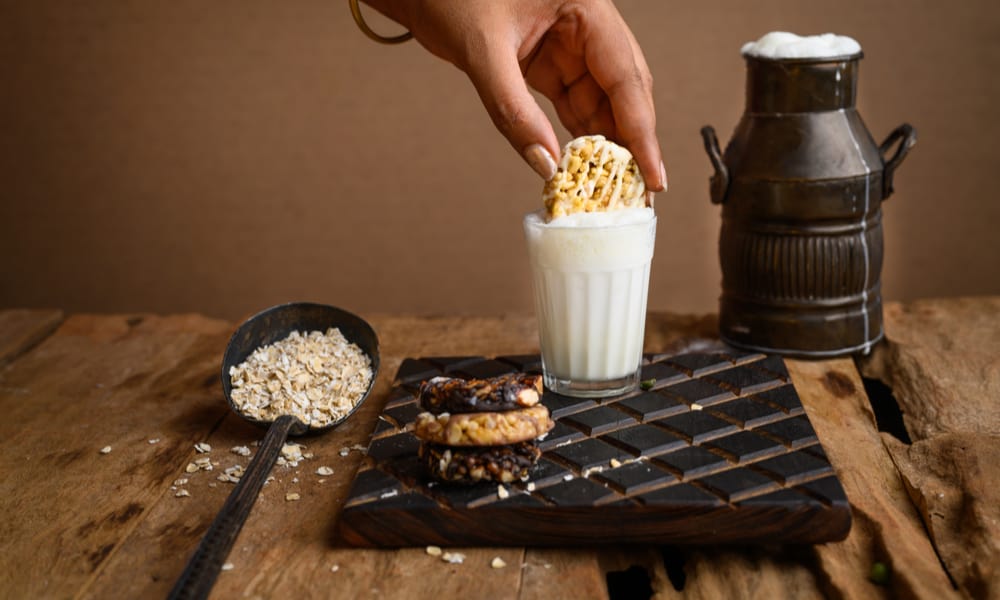
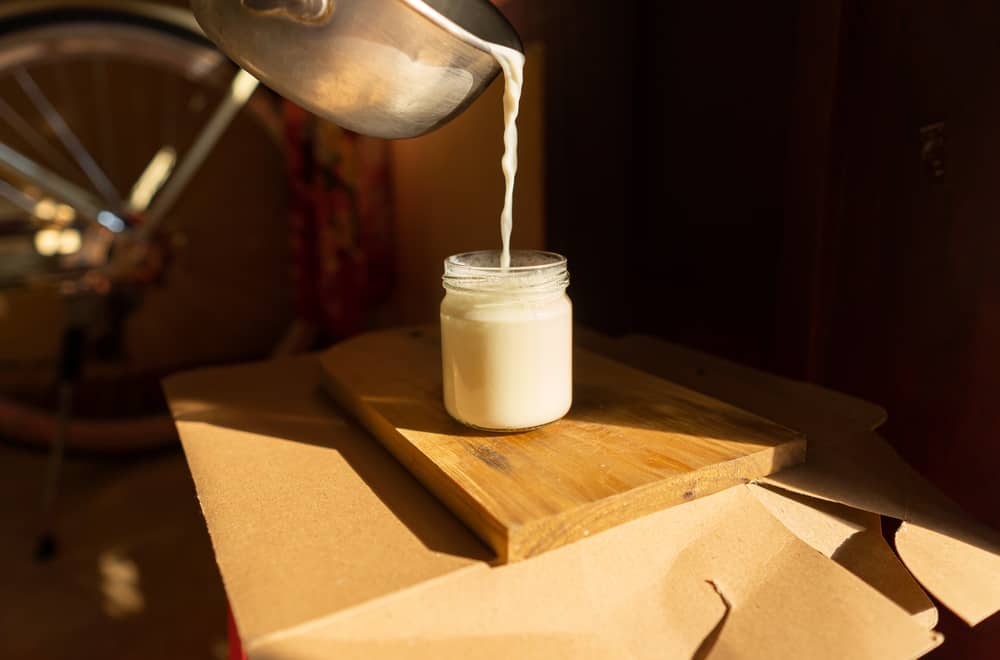
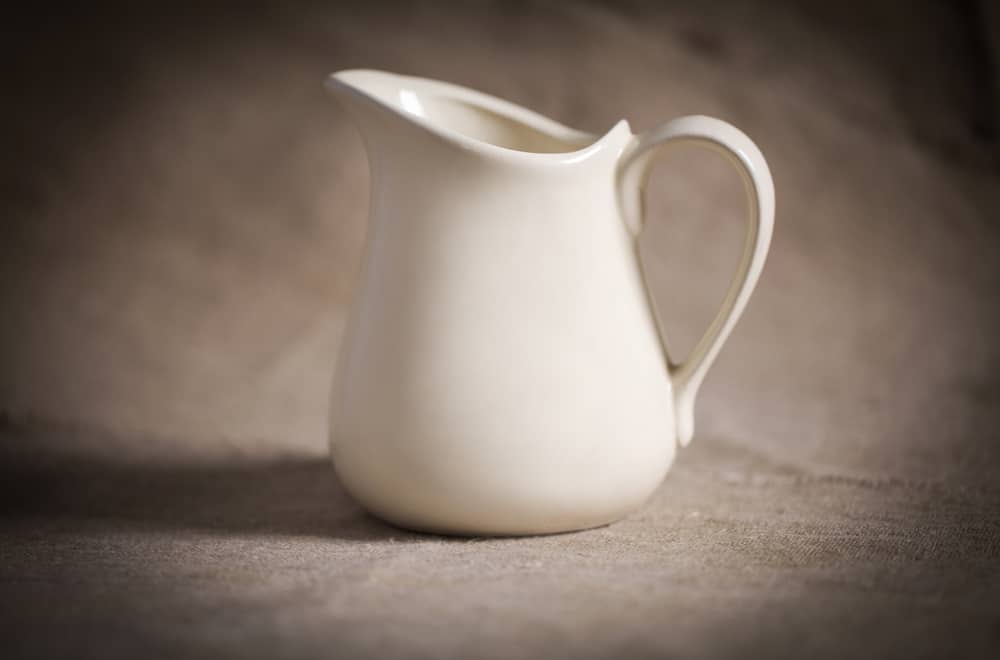
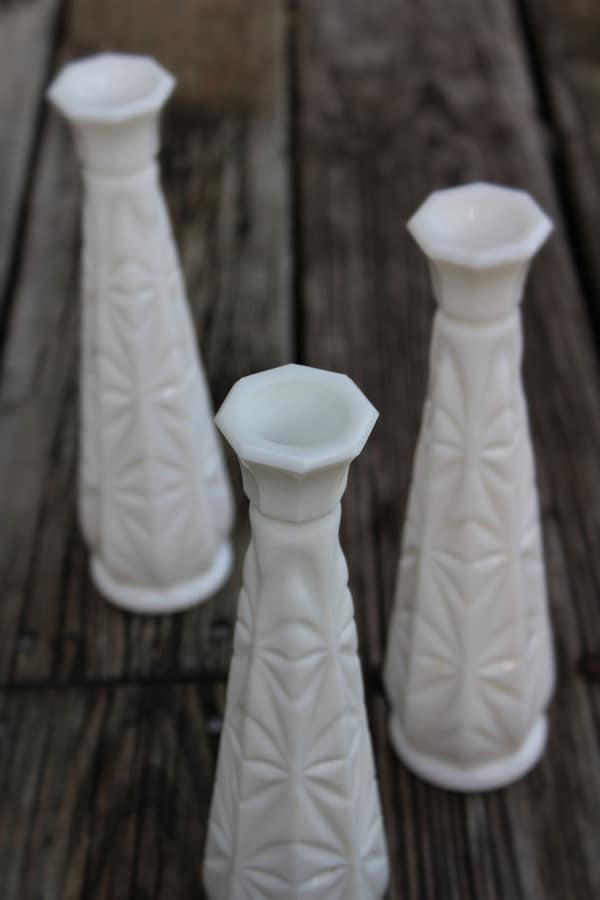
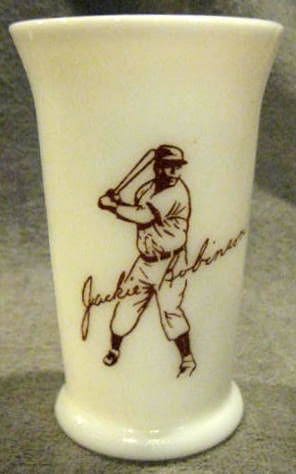

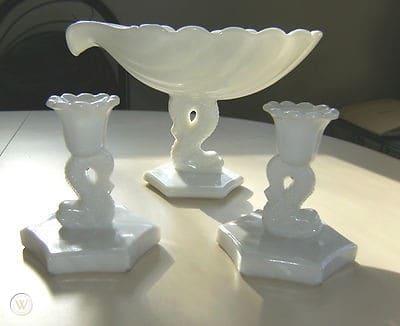
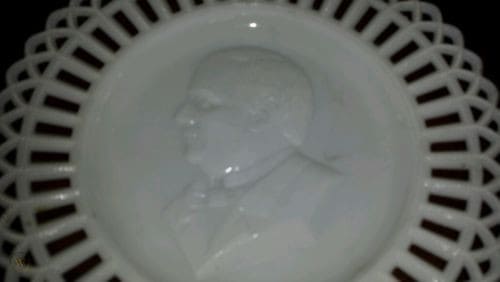
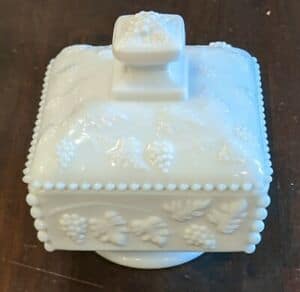
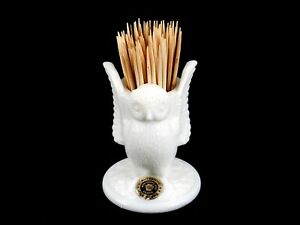
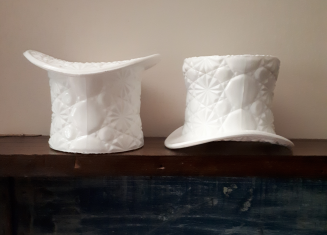
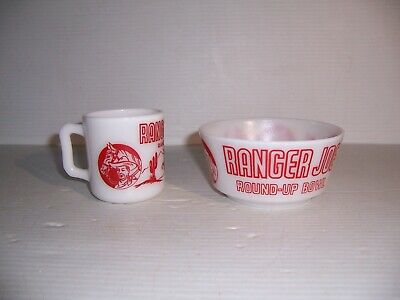
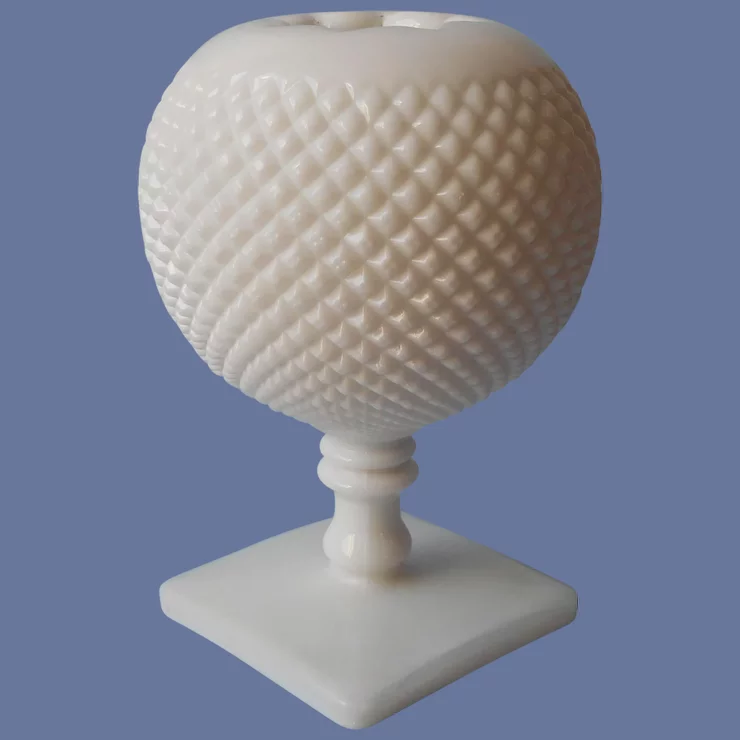
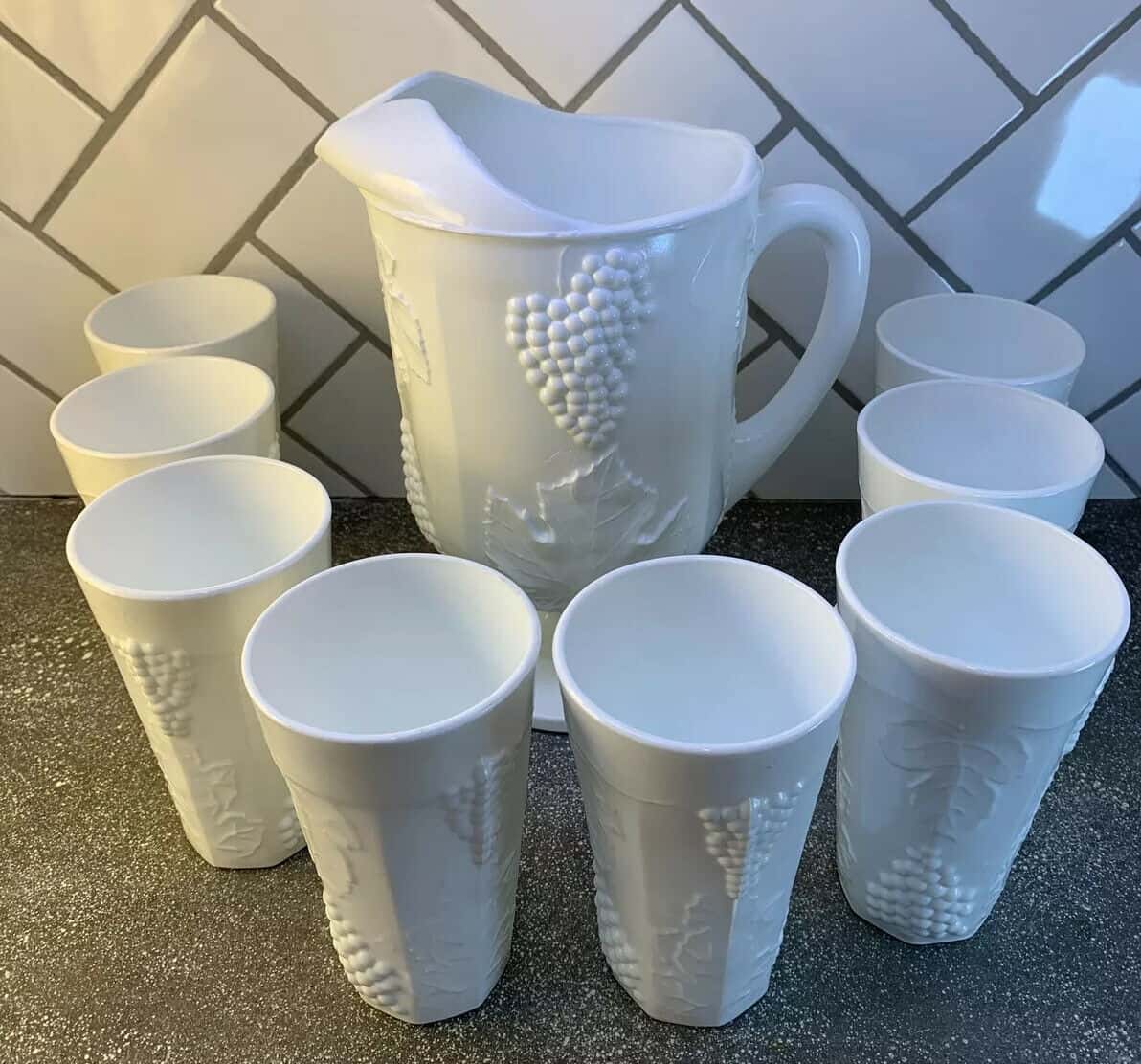
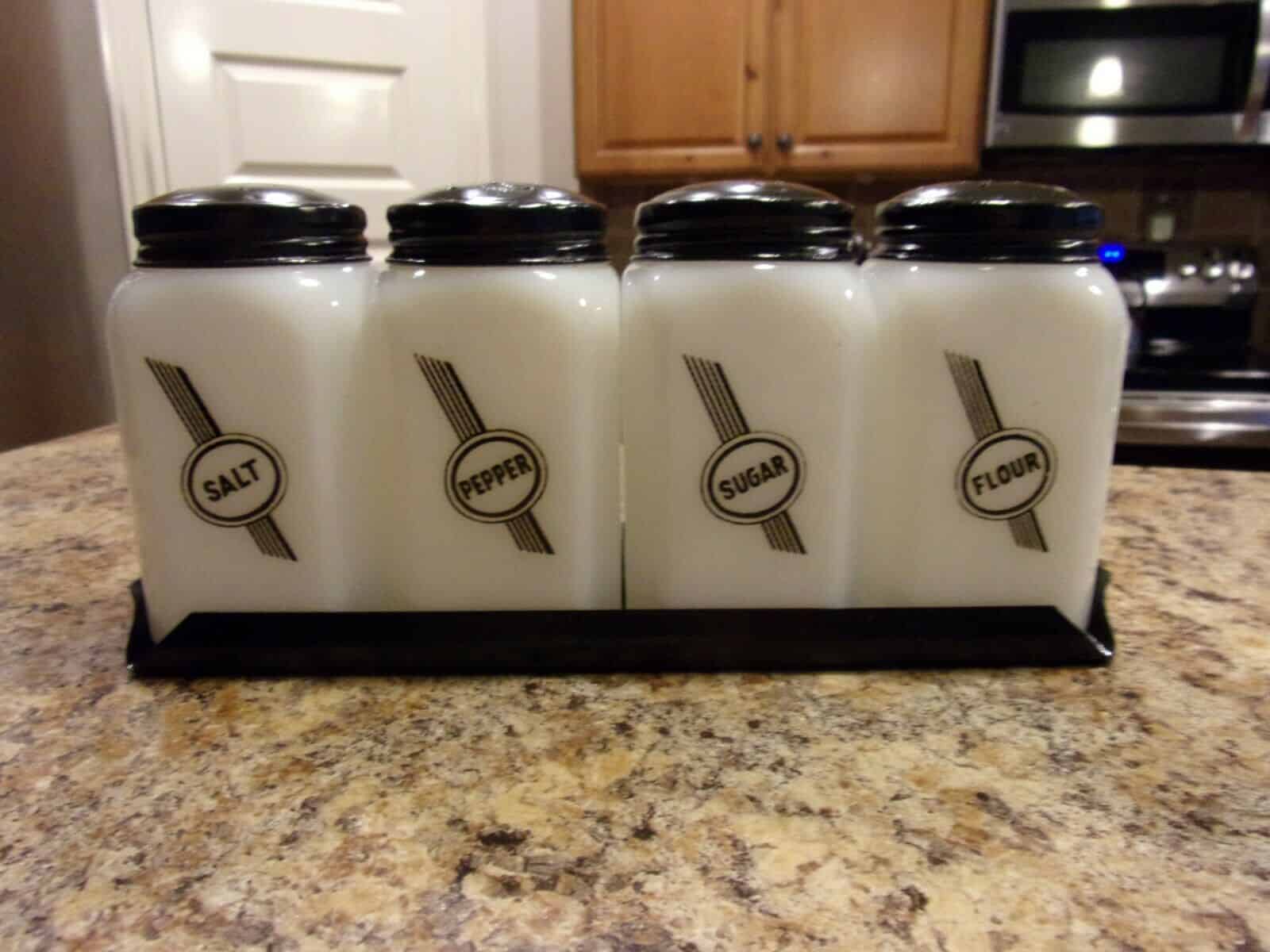
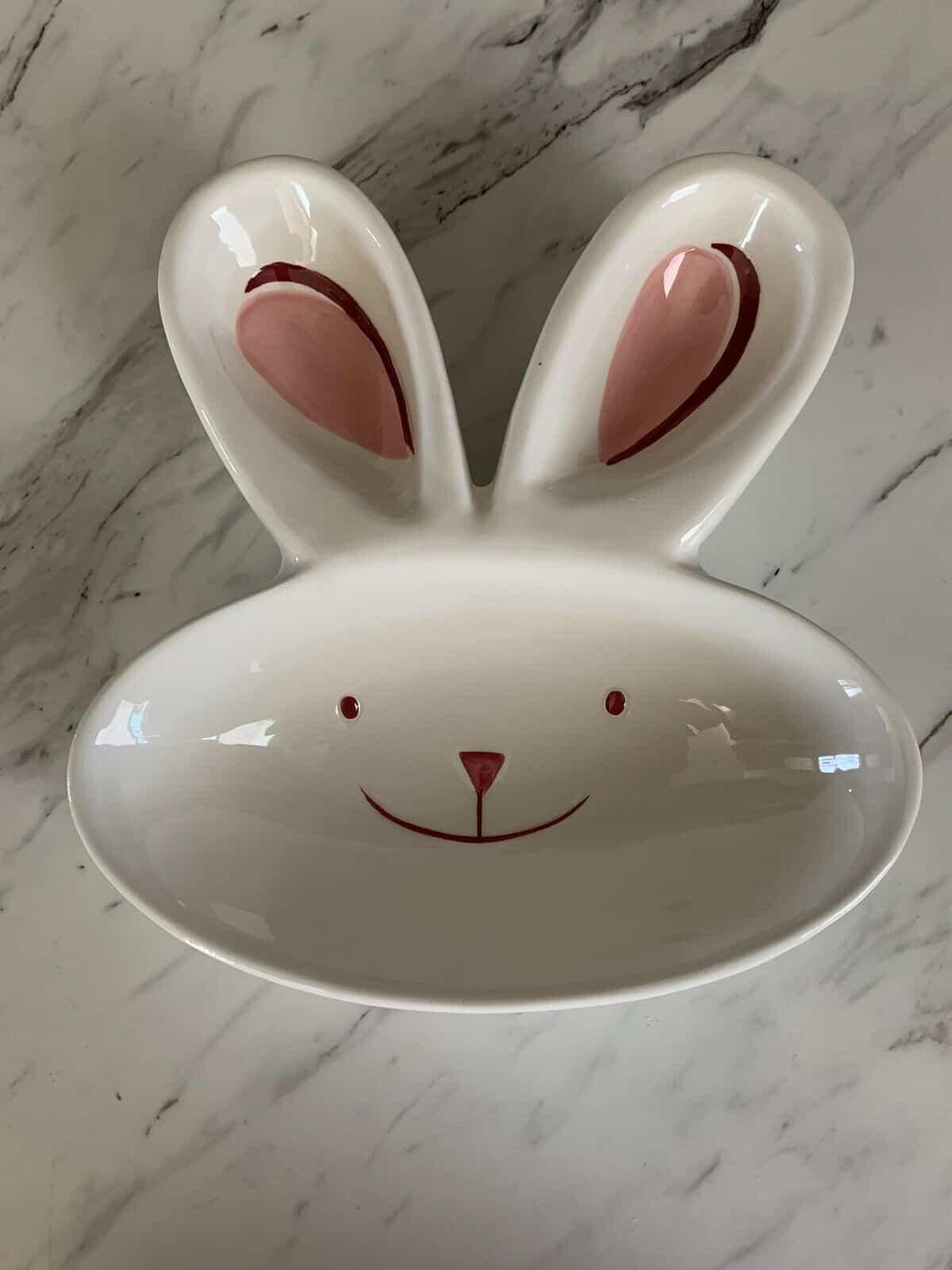
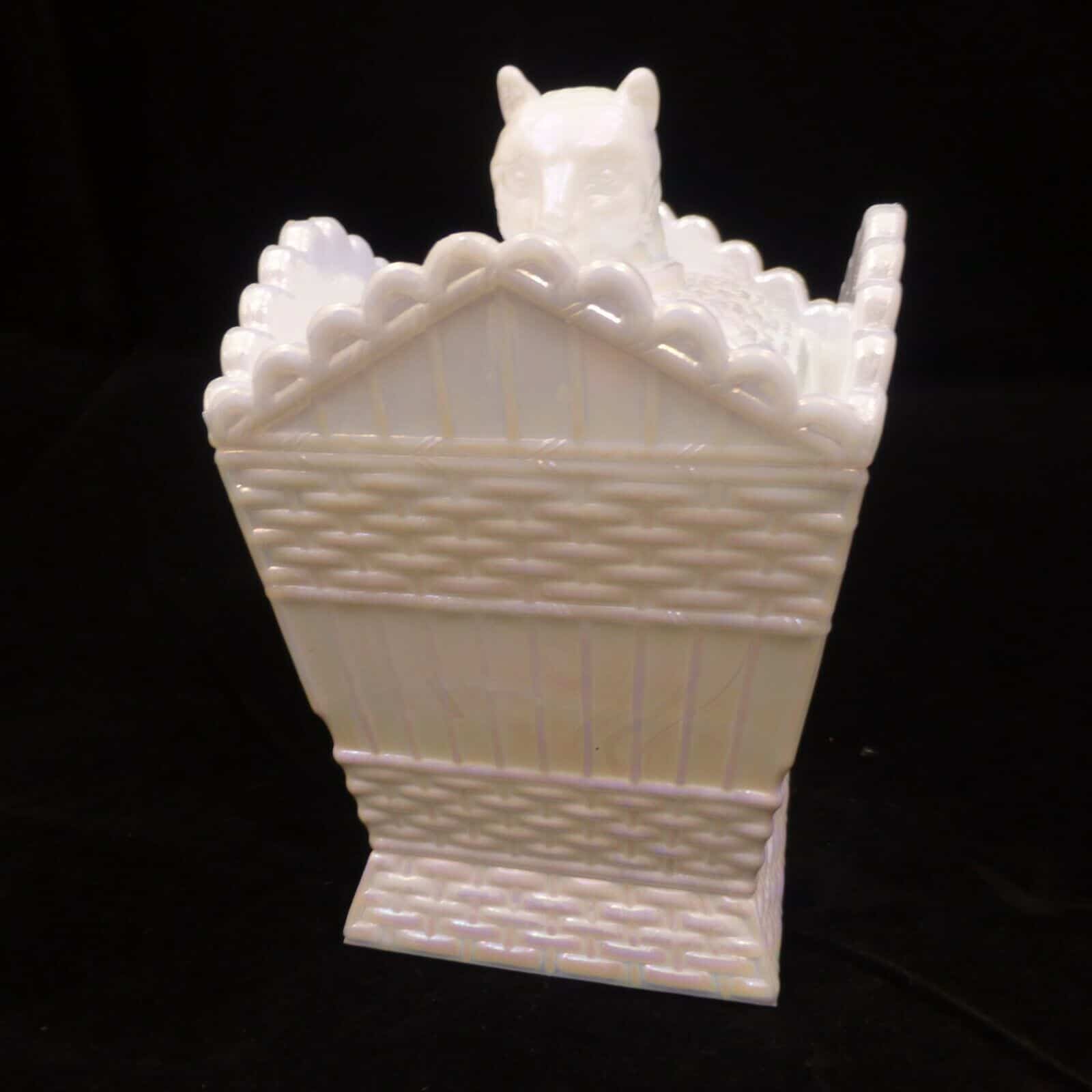
I have a light green colored milk glass vase in a rectangular shape . The bottom of it has a Starburst on it. I was wondering it’s value. I can’t find anything like it. It was my mom’s who is 93 years old. Do you have any value or information on it?
Thank you